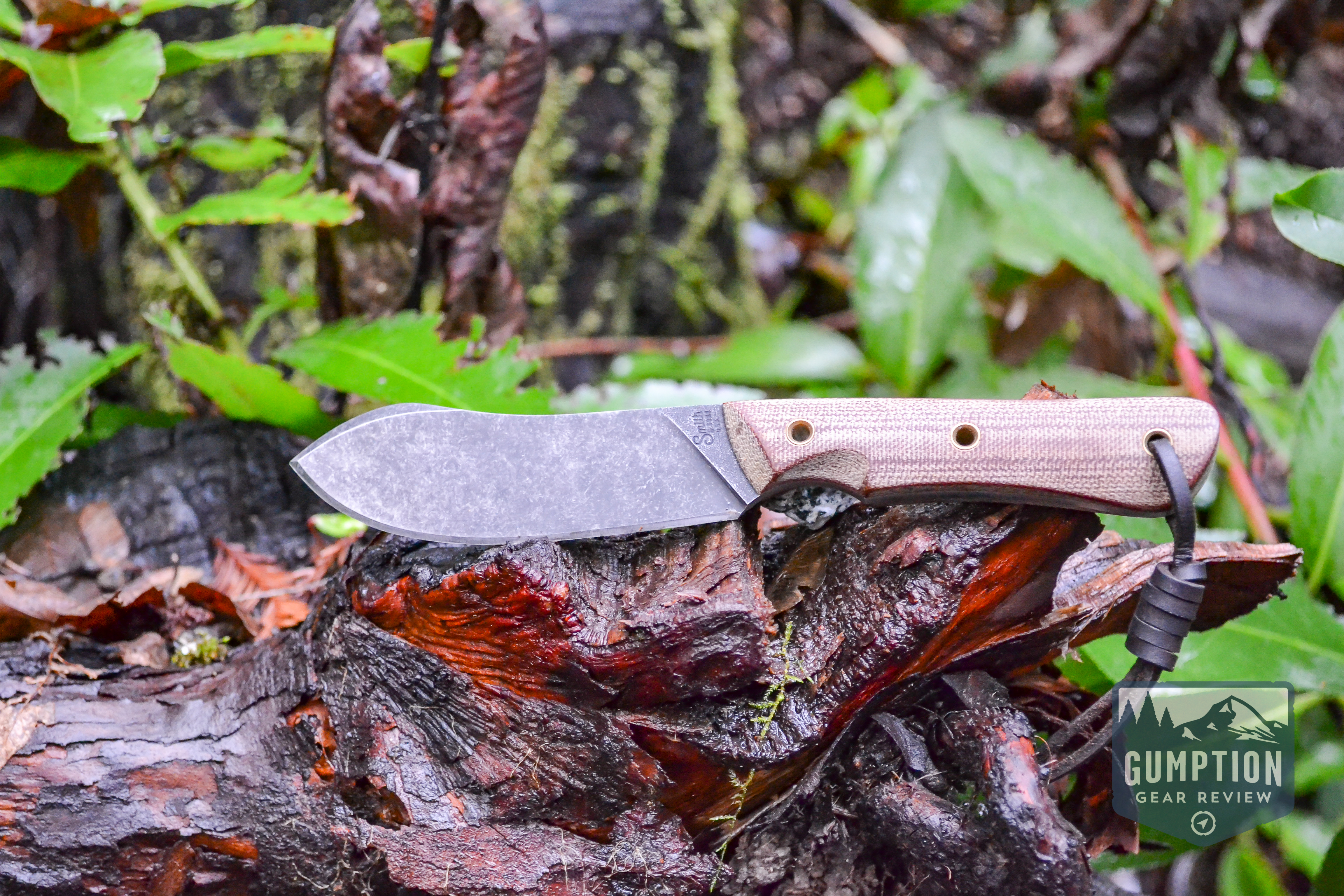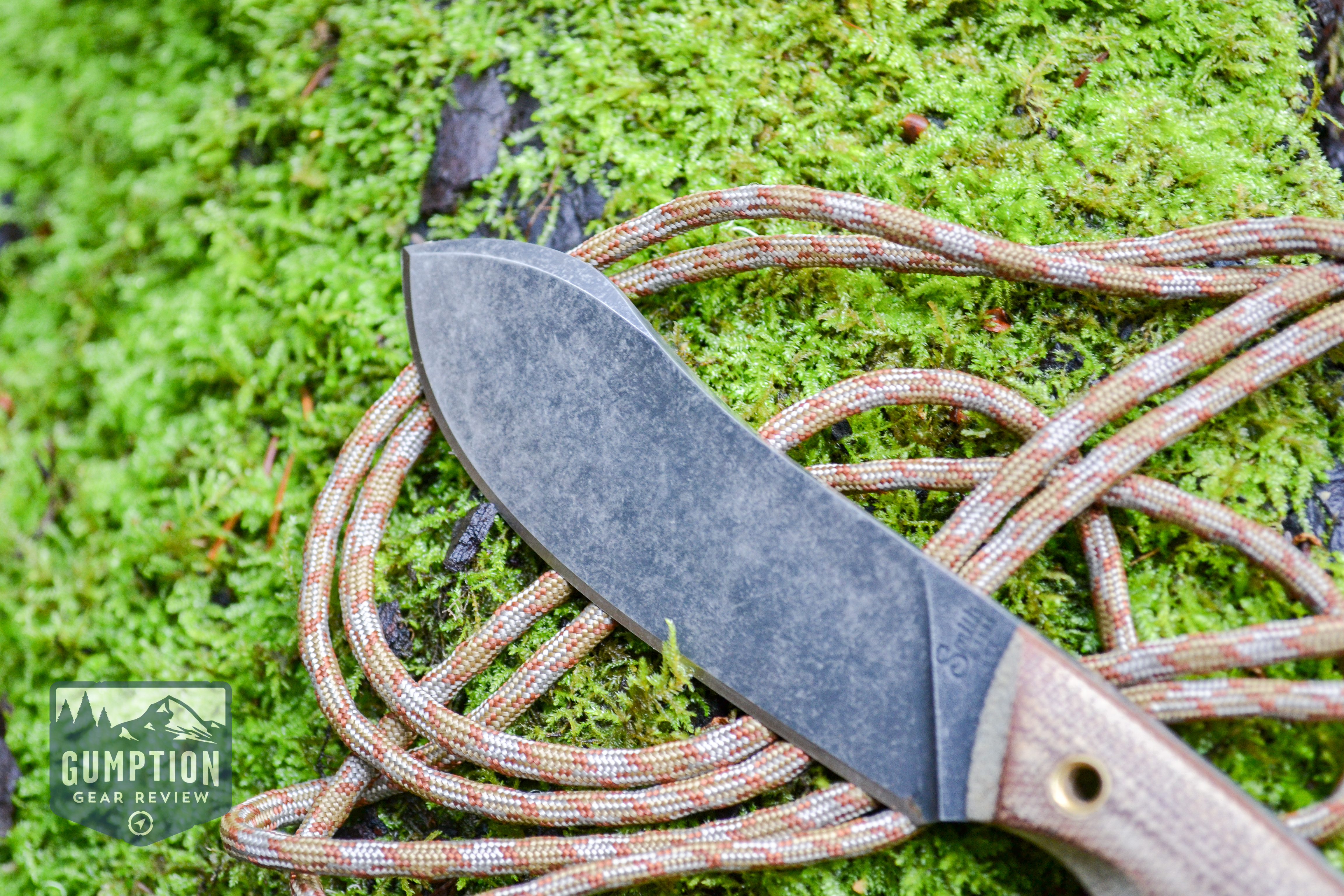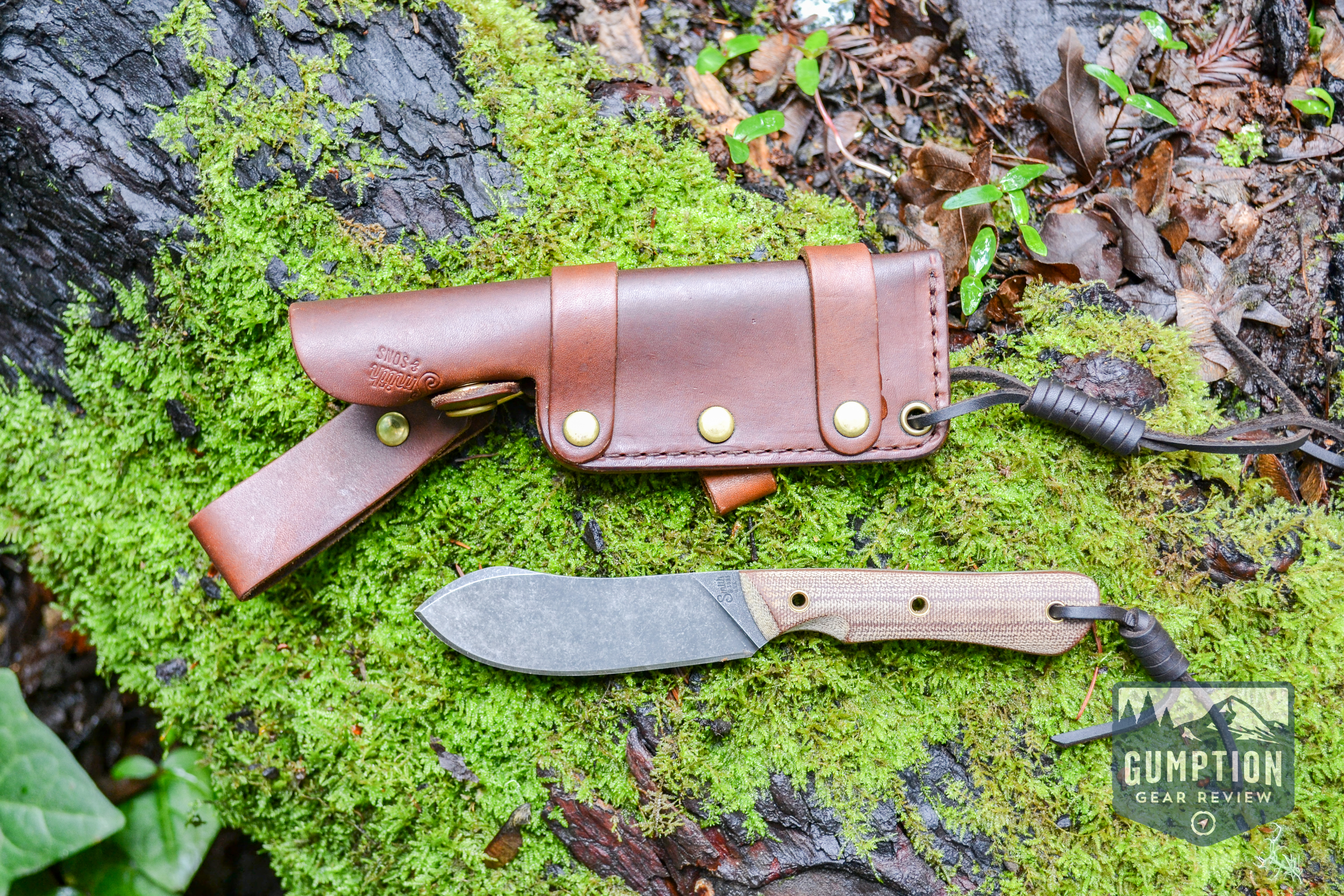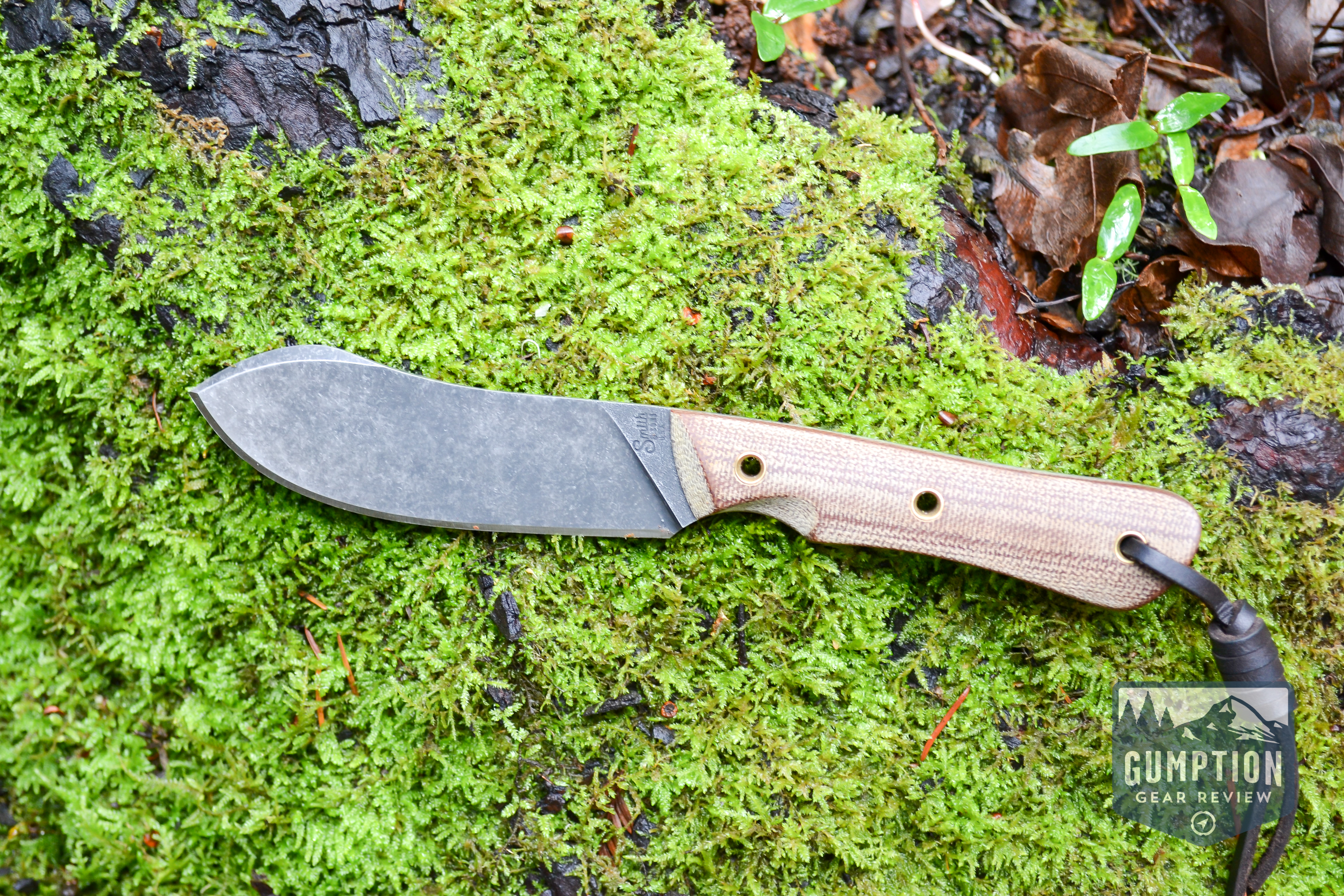 Of all the classic knife patterns to have originated in the Americas, the “Nessmuk” is one of the legends. A century after it first appeared, the Nessmuk style blade remains unique in the knife world. The tale of the Nessmuk begins with George Washington Sears, and avid outdoorsman who wrote of camping and paddling in the Adirondacks in the 1880s. Both his words and his suggestions on outdoors life have created a legacy that live on to this day.
Of all the classic knife patterns to have originated in the Americas, the “Nessmuk” is one of the legends. A century after it first appeared, the Nessmuk style blade remains unique in the knife world. The tale of the Nessmuk begins with George Washington Sears, and avid outdoorsman who wrote of camping and paddling in the Adirondacks in the 1880s. Both his words and his suggestions on outdoors life have created a legacy that live on to this day.
“She’s all my fancy painted her, she’s lovely, she is light. She waltzes on the waves by day and rests with me at night. But I had nothing to do with her painting. The man who built her did that. And I commence with the canoe because that is about the first thing you need on entering the Northern Wilderness.”
Thus opened Nessmuk’s first commissioned “letter” for Forest and Stream magazine in 1880. For years thereafter, George Washington Sears, under the penname Nessmuk, contributed a beautiful series of pieces that shared his observations on nature and outdoor life in the Adirondacks of upstate New York. In 1884 his landmark book, Woodcraft, was published and has remained in print ever since. The classic text is still read and revered to this day, and remains a go to guide for many modern outdoorsmen.
Nessmuk was a woodsman, not a survivalist. He was bent on thriving in wild places, and his writings introduced his concepts, techniques, and experiences to a growing segment of America that was eager to experience the outdoors in a land full of adventure and possibilities. In his writings, Sears spoke of a sensible trio of tools – what has become known as the “Nessmuk Trio”: a hatchet, a simple jackknife and a fixed-blade knife of his own design.
There within the pages of Woodcraft was Nessmuk’s sketch of this trio of tools that introduced the world to the legendary knife pattern that would bear his name. Following is how he described the now infamous fixed blade which was an intricate part of his woodcraft system:
 “A word as to knife, or knives. These are of prime necessity, and should be of the best, both as to shape and temper. The ‘bowies’ and ‘hunting knives’ usually kept on sale, are thick, clumsy affairs, with a sort of ridge along the middle of the blade, murderous looking, but of little use; rather fitted to adorn a dime novel or the belt of ‘Billy the Kid,’ than the outfit of the hunter. The one shown… is thin in the blade, and handy for skinning, cutting meat, or eating with. The strong double-bladed pocket knife is the best model I have yet found, and, in connection with the sheath knife, is all sufficient for camp use.”
“A word as to knife, or knives. These are of prime necessity, and should be of the best, both as to shape and temper. The ‘bowies’ and ‘hunting knives’ usually kept on sale, are thick, clumsy affairs, with a sort of ridge along the middle of the blade, murderous looking, but of little use; rather fitted to adorn a dime novel or the belt of ‘Billy the Kid,’ than the outfit of the hunter. The one shown… is thin in the blade, and handy for skinning, cutting meat, or eating with. The strong double-bladed pocket knife is the best model I have yet found, and, in connection with the sheath knife, is all sufficient for camp use.”
This distinctly designed blade excelled at food preparation, camp chores, as well as skinning and field dressing game. The most defining characteristic is the hump of the blade, which is there for myriad reasons. Not only does it create a more robust tip, but the hump was equally adept at spooning camp potatoes from your bowl. In short, the very essence of the Nessmuk design was versatility and diversity – nothing short of essential, elemental woodcraft.

Like the infamous Bowie knife, the “Nessmuk” is not only a piece of Americana, but its mystique has taken on several iterations since the original drawing was published. Today, many modern examples of Nessmuk’s knife remain, some more faithful to the original mission of the knife than others.
At their shop in Sulphur Louisiana, the Smith & Sons family has breathed new life into the classic Nessmuk design. With a silhouette that pays homage to the original, the Smith & Sons Pioneer is a slightly compact, modern interpretation of the original. Measuring in with an overall length of 7 3/4″, and a blade stock of 5/32, the Pioneer is the perfect combination of “small enough to carry daily” and “big enough to do whatever I need it to.” Modern techniques and design treatments make the Pioneer a more useful tool in the outdoors than its predecessor whether hunting, camping or cooking. Forged from a D2 steel that is heat treated at under high tolerances, the Pioneer provides unprecedented edge retention that would make ol’ Nessmuk himself jealous. The sharply squared spine of the Pioneer offers an edge capable of throwing sparks from a ferrocerium rod for fire-starting. Beyond utilizing the hump of the blade for a rudimentary spoon, it makes scraping tinder much easier than it would be with a drop point style blade.
Modern techniques and design treatments make the Pioneer a more useful tool in the outdoors than its predecessor whether hunting, camping or cooking. Forged from a D2 steel that is heat treated at under high tolerances, the Pioneer provides unprecedented edge retention that would make ol’ Nessmuk himself jealous. The sharply squared spine of the Pioneer offers an edge capable of throwing sparks from a ferrocerium rod for fire-starting. Beyond utilizing the hump of the blade for a rudimentary spoon, it makes scraping tinder much easier than it would be with a drop point style blade.
The rounded blade tip offers a natural upswept blade that easily lends itself to the tasks of skinning and gutting. The design also reduces the chances of accidentally piercing the innards of your dinner. The stunning aesthetic of the knife itself is highlighted by a distinctive blackwash finish the Smith family attains by forcing a patina onto the steel and then stonewashing it. Canvas Micarta and brass pins finish off this stunner.
For those with larger hands, you might prefer a slightly more substantial handle. But as we’ve come to expect from Smith & Sons, the ergonomics of the overall design are on point. This knife rests easy in the hand and there’s no fatigue even after long hours of use. And that Micarta handle melts away into the palm of the hand. And because it’s a Smith & Sons blade, you can count on free sharpening for the life of the blade.
Bottom Line:
A modern take on an American classic, the Smith & Sons Pioneer is a do-it-all blade for those who take the road less traveled and come back better for it. Purpose built and performance driven, this spin on the legendary Nessmuk design not only honors the past, but respects your future.
